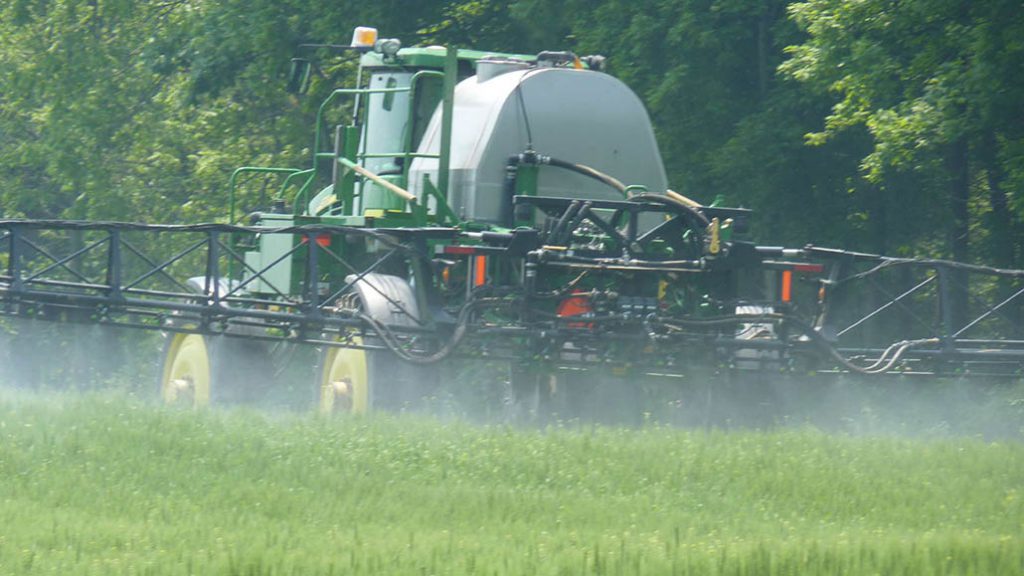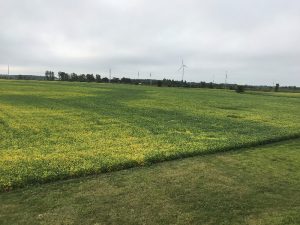Growing an association
SETTING THE PATH AHEAD

THIS MARCH, THE Ontario Professional Agri Contractors Association (OPACA) held its third AGM, adding more members, taking stock of past accomplishments and setting the path ahead.
OPACA was created so that custom farming business owners could better manage the challenges of the present and future, while improving its collective relationship with government, the public and the environment.
The need for the organization first became clear, says one of OPACA’s founders, Sonke Claussen (of Claussen Farms Custom Farming in Brucefield, Ontario) during the PEDv epidemic of 2014/2015. To support equipment improvements to help contain the outbreak, the provincial government provided funding to farmers but none to contractors, who were applying about half of Ontario’s manure/biosolids at the time. It was a situation that spurred Claussen and a few others to meet and discuss how to best tackle common problems and establish collaborations with regulatory agencies and various associations. They decided an organization was needed.
GETTING ORGANIZED
OPACA was envisioned to educate its eventual members, customers, and the general public, engage in research partnerships, and implement best management practices relating to sustainable nutrient application and crop management technology. In addition, OPACA could strive to influence updates to the provincial Nutrient Management Act and legislation such as that related to farm machinery on roads, explore a group insurance purchase, and more.
Over the months that followed, OPACA was registered as a non-profit, an executive director (Janice Janiec) was hired, a questionnaire was sent to potential members, and ‘acting’ directors finalized the constitution for future membership approval. Founders also reached out to other farm groups as well as equipment manufacturers and dealers.
The first AGM was held in the fall 2017 and the third (in early March) was a “huge success,” says Claussen, with over 100 people in attendance and sign-ups that grew the membership from 60 to 70.
“We are lacking members out of eastern Ontario and want more sign-up in general, as the more members we have, the stronger our association is going to be,” he notes. “Right now, I would say we have a fairly good balance of members of all services provided [but] we want to include crop consultants.”
Discussions at the AGM covered group benefit plans, liability insurance, and results of the OPACA rates survey. The 2019-2021 board was also elected: President Steve Gloor, Vice President Mark Luymes, and Treasurer Andy Devries (with Sonke Claussen as Past President).
Gloor says, “I’m looking forward to the next couple years to grow the association from our modest beginnings in southwestern Ontario to expand to northern and eastern Ontario. I believe our association is a valuable part of the Ontario agricultural scene, and we hope to be able to provide the services and information our membership has been asking for. I’m excited to see where the next couple years will take us as our membership numbers have steadily increased and our shop meetings, car tour, and AGM have been very well-received.”
EVENTS
The car tour in Huron, Middlesex, and Perth counties saw OPACA members visiting a dairy operation with a biodigester, Stonetown Cheese in St. Marys, and the Nuhn factory. The two 2018 ‘shop meetings,’ in Brucefield and Moorefield, provided the chance for members to get up close to different pieces of equipment (often shop-made) and for them to visit with each other. The networking isn’t something that’s happened much before these meetings, says Claussen. He also reports that the response to this type of gathering has been “really good,” and that at least one will be held this year.
Internally, OPACA’s constitution and by-laws are being worked on, as well as its logo. The organization will also continue building relationships with other associations and consolidating its financial strength. In 2020, OPACA plans to take part in the Manure Expo coming to Ontario.
Claussen adds that OPACA has been contacted by many manure-handling equipment manufacturers (mainly European and quite specialized) for the chance to present new technology to the membership, firms which offer equipment for in-crop application or that otherwise provide more uniform coverage or increased efficiency. He believes these presentations provide good ideas for better 4R nutrient placement and are inspiring for both contractors and the local equipment community.
The high cost of equipment has spurred OPACA to work on suggested fees for various custom services.
ESTABLISHING FEES
“We started with a survey among our members and came up with a side-by-side comparison chart,” says Claussen. “That chart unveiled a wide spread in pricing for the same service using the same or similar equipment. It shows that enough contractors are not charging enough to cover their total costs and make a margin on top. At this point, we assume there are two reasons for that.”
First, not all members know their true costs because equipment price hikes over the past few years have not been addressed and recognized.
“Secondly, not everyone is charging fair and sustainable rates because of fear of losing business to another contractor,” Claussen explains. “This needs to change. Contractors can’t lose money running their equipment. It is not good for contractors and clients because in the end, work quality and performance or compliance with regulations will suffer. We are planning to provide more information and offer training on those financials. We are also in contact with OMAFRA [the Ontario Ministry of Agriculture, Food and Rural Affairs] which is surveying custom work rates every other year.”
Another concern being addressed by OPACA is road regulations, which “will be changed, and in some regards, need to be changed,” says Claussen. “We like to be part of the ongoing discussion, so that the outcome is practical and effective.”
Source water protection and winter spreading is another concern, but Claussen says OPACA’s involvement in the ‘Timing Matters’ initiative shows that contractors are very seldom involved with winter spreading, demonstrating their professional standard.
This is an update on OPACA, to read about the association’s beginnings, read New Nutrient management association. •























